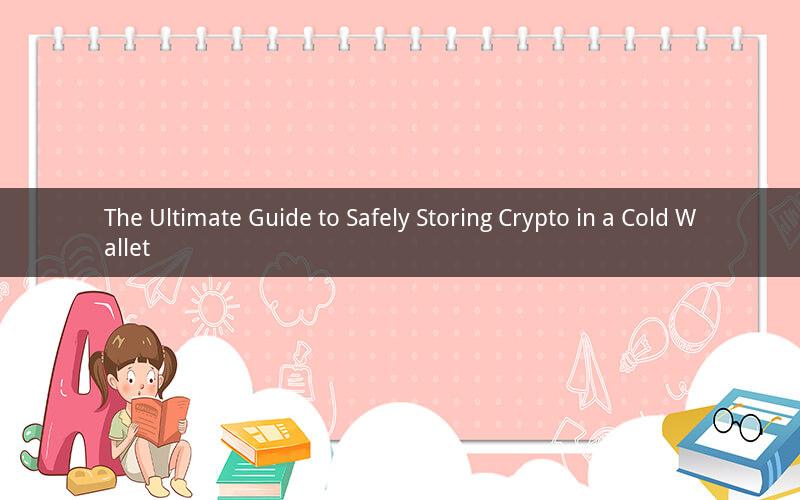
Introduction:
As the cryptocurrency market continues to grow, the need for secure storage solutions becomes increasingly important. One of the most secure methods of storing your digital assets is by using a cold wallet. In this comprehensive guide, we will explore how to put crypto in a cold wallet, ensuring the safety of your investments.
1. Understanding Cold Wallets
Cold wallets, also known as hardware wallets, are physical devices designed to store cryptocurrency offline. Unlike hot wallets, which are connected to the internet, cold wallets provide enhanced security by keeping your private keys offline, making them less susceptible to hacking and theft.
2. Choosing the Right Cold Wallet
With numerous cold wallet options available, it's crucial to select the right one for your needs. Consider factors such as compatibility with your cryptocurrency, ease of use, and reputation of the manufacturer. Some popular cold wallets include Ledger Nano S, Trezor Model T, and KeepKey.
3. Setting Up Your Cold Wallet
Once you have chosen a cold wallet, follow these steps to set it up:
a. Unboxing: Open the cold wallet package and carefully remove the device from its protective casing.
b. Initialization: Power on the cold wallet and follow the on-screen instructions to initialize it. This process may involve setting up a PIN, creating a backup seed phrase, and confirming your recovery phrase.
c. Pairing: Connect the cold wallet to your computer using a USB cable. Install the necessary software and follow the instructions to pair the device with your computer.
4. Adding Cryptocurrency to Your Cold Wallet
To add cryptocurrency to your cold wallet, follow these steps:
a. Send Funds: Open your exchange or wallet and select the cryptocurrency you want to transfer. Generate a new receiving address for your cold wallet.
b. Transfer: Send the desired amount of cryptocurrency to the generated receiving address. Ensure that the transaction is confirmed before proceeding.
c. Wait for Confirmation: Once the transaction is confirmed, the cryptocurrency will be added to your cold wallet. You can verify the balance by checking the wallet's interface or using a blockchain explorer.
5. Best Practices for Cold Wallet Security
To ensure the security of your cryptocurrency stored in a cold wallet, consider the following best practices:
a. Backup: Create multiple backups of your cold wallet's recovery phrase and store them in safe and separate locations.
b. Keep Your PIN Private: Never share your cold wallet's PIN with anyone, including friends, family, or support teams.
c. Update Regularly: Keep your cold wallet's software and firmware up to date to protect against vulnerabilities.
d. Use Secure Locations: Store your cold wallet in a secure and fireproof location, such as a safe or safe deposit box.
e. Educate Yourself: Stay informed about the latest security threats and best practices for cold wallet storage.
6. Common Questions and Answers
Q1: Can I use a cold wallet for all types of cryptocurrencies?
A1: Yes, most cold wallets support multiple cryptocurrencies. However, it's essential to check the compatibility of your chosen cold wallet with the specific cryptocurrencies you wish to store.
Q2: How long does it take to transfer cryptocurrency to a cold wallet?
A2: The transfer time depends on the blockchain's confirmation time. Generally, it takes a few minutes to a few hours for a transaction to be confirmed, depending on the network's congestion.
Q3: Can I recover my cryptocurrency if I lose my cold wallet?
A3: Yes, as long as you have your cold wallet's recovery phrase, you can recover your cryptocurrency. However, it's crucial to store the recovery phrase securely and make multiple backups.
Q4: Are cold wallets susceptible to physical damage?
A4: Yes, cold wallets can be damaged by physical factors such as water, heat, or falls. It's important to handle the device with care and store it in a safe and secure location.
Q5: Can I use a cold wallet for everyday transactions?
A5: While cold wallets are excellent for long-term storage, they are not suitable for everyday transactions. Cold wallets are designed for secure storage and are not intended for frequent transactions.
Conclusion:
Storing your cryptocurrency in a cold wallet is an essential step towards ensuring the security of your digital assets. By following this guide, you can safely transfer your crypto to a cold wallet and enjoy the peace of mind that comes with enhanced security. Remember to choose the right cold wallet, follow best practices for security, and stay informed about the latest developments in cryptocurrency storage.